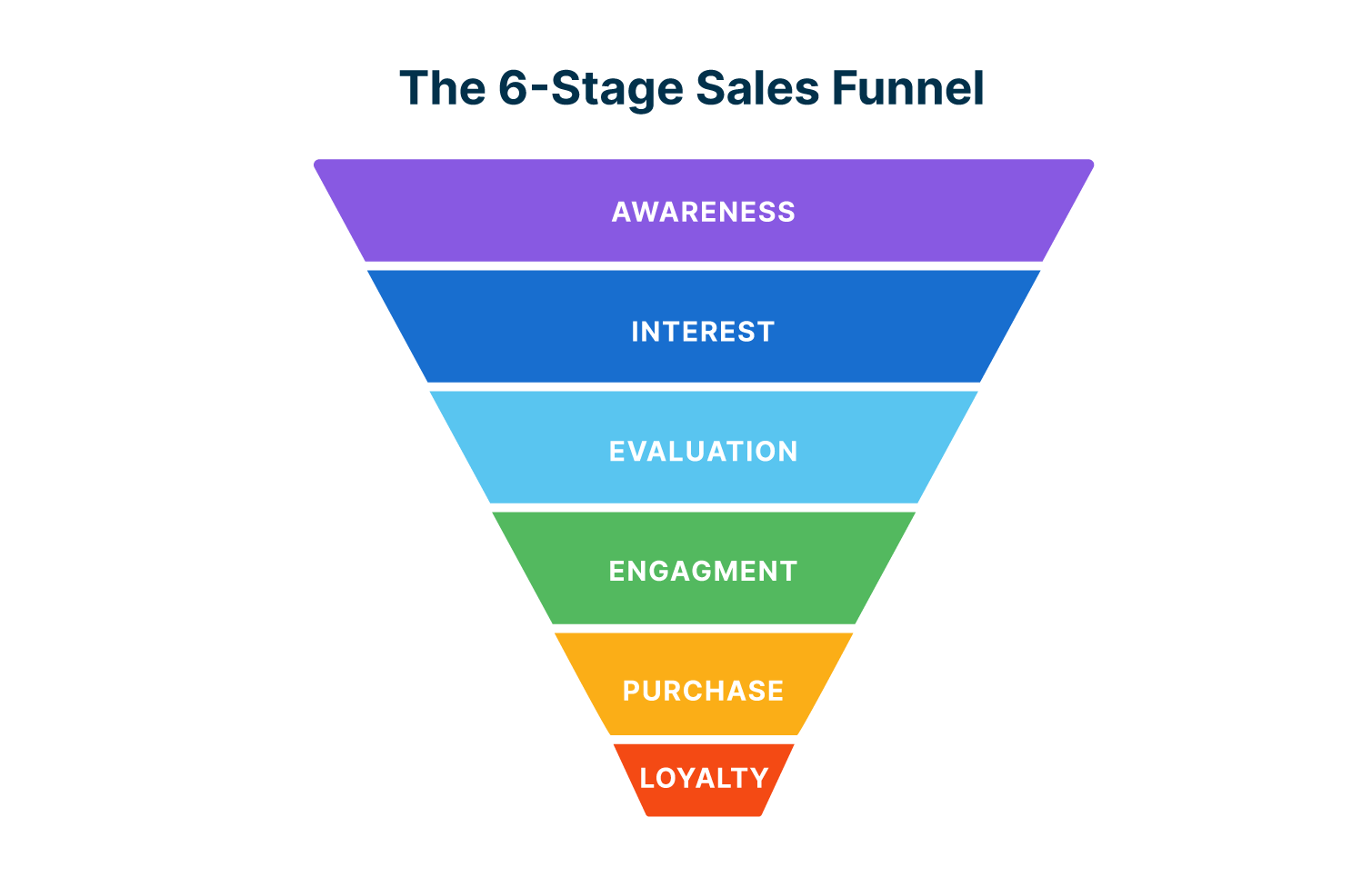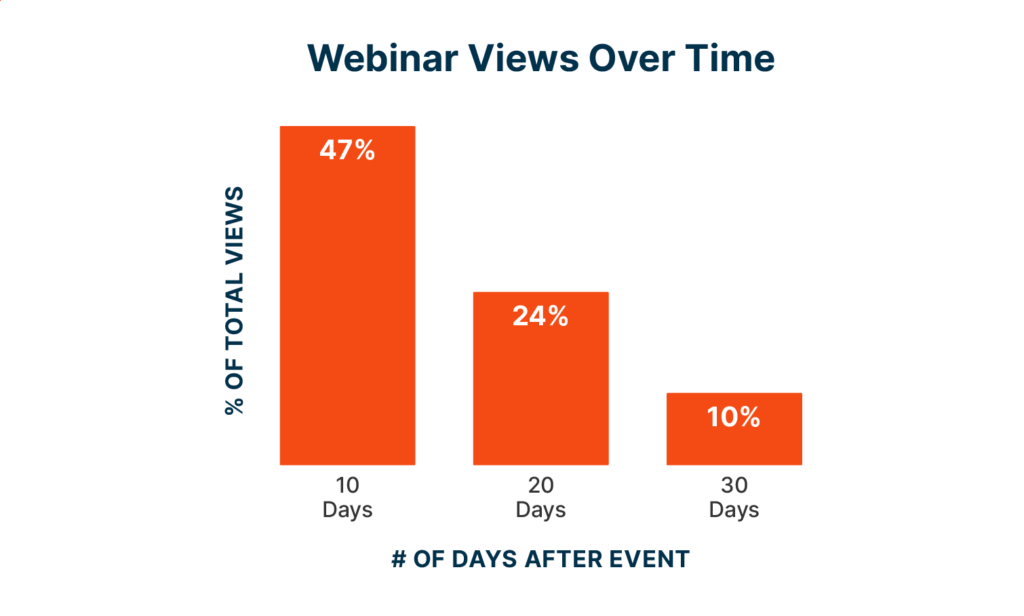
How Does Your Webinar Align to Your Marketing Funnel?
Article Summary
Webinars are a powerful lead generation tool, with 73% of B2B marketers identifying them as their top choice. The effectiveness of webinars lies in the webinar marketing funnel, a technique that funnels potential customers through stages of marketing content to motivate purchase decisions. This process begins with creating awareness and progresses through educational and demand generation stages, leading to active engagement and, ultimately, purchasing. A webinar funnel is a structured approach to promotion, hosting, and follow-up, aiming to attract a target audience, collect their information, and convert them into leads. The hosting process moves potential customers through activities indicating interest and engagement. Benefits of a webinar funnel include direct personal contact with audiences, longer views for video content, and the superior format for evergreen content. To create a successful webinar funnel, it's essential to capture the audience's attention, confirm registration, send reminders, and deliver a clear, engaging message.
Among B2B marketers, 73% identify webinars as their top lead generation tool.
But why do webinars—one of many popular and effective B2B content types—excel at generating quality leads? The marketing technique known as a webinar marketing funnel provides the answer.
For decades, marketing and sales organizations across industries have used the concept of funneling potential customers and clients through successively narrower stages of marketing content to educate and motivate capable buyers. Marketing and sales funnels work by eliciting purchase decisions in small increments rather than making a direct, upfront sales pitch. These increments begin with creating awareness and progress through educational and demand generation stages to active engagement and, ultimately, purchasing.
In this guide, you’ll learn how the concept of the B2B marketing funnel for lead generation applies to webinars and how you can use webinars to generate leads.
Key Takeaways
- B2B marketing and sales funnels lead potential customers through successive stages of interest building and engagement to identify purchase-ready leads
- Marketers can use webinar promotion, hosting, and follow-up to funnel target audiences toward lead conversion and purchase decisions
- Creating a webinar marketing funnel requires promoting to your target audience and delivering clear messaging that encourages potential customers to engage with your brand
What Is a Webinar Funnel?
Although B2B marketing and sales funnels vary by industry, marketers commonly divide the process into six stages:

- Awareness
- Interest
- Evaluation
- Engagement
- Purchase
- Loyalty
A webinar funnel refers to a template for webinar promotion, hosting, and follow-up that maps closely to these stages. This format focuses on attracting a target audience of attendees with the prospect of engaging content, collecting attendees’ business contact information, and converting attendees into leads either during the webinar or through follow-up contact afterward.
The webinar hosting process simulates funneling by moving potential customers through a sequence of activities that progressively indicate greater degrees of interest and engagement, while filtering out the less interested. In practice, this process should contain these steps:
- Potential customers first see webinar promotional content, such as emails or social media and web ads
- If the content piques their interest, potential customers then navigate to the webinar landing page
- The landing page presents readers with more information about what the webinar will contain
- Registrants then submit information such as names, business emails and phone numbers, and other job and industry data
- Among registrants, an average 40% will attend, and 73% of the total attendees will convert into qualified leads
- Webinars hosted on-demand after the live event will accumulate more views—47% of which will occur in the first 10 days—generating additional leads and follow-up opportunities

Benefits of a Webinar Funnel
Webinar funnels generate more leads than other B2B marketing content for various reasons.
1. Direct Personal Contact with Audiences
Marketers use funneling paradigms to identify capable buyers among potential customers and motivate them toward a purchase decision. Often the final hurdle to cross involves addressing a potential customer’s unique concerns and questions and establishing a personal connection. In the live Q&A portions of webinars, hosts can do just that in real time.
2. Longer Views for Video Content
Among B2B marketers that create video content, 86% report successfully generating leads and meeting or exceeding ROI goals. Additionally, content consumers remember 95% more information presented in video than in text. As the average webinar view duration is 52 minutes, webinars provide B2B marketers with an unequaled opportunity to present their most engaging video content in longer segments.
3. Superior Format for Evergreen Content
In marketing patois, evergreen content refers to subject matter that stays relevant. Although industry hot topics attract more content consumers in the short term, evergreen content maximizes lead generation and ROI. How-tos, guides, and other types of in-depth educational content, including webinar videos, are examples of evergreen content. On-demand webinars allow B2B marketers to give viewers detailed tips and tutorials for products and services in an engaging video format, while continuing to generate leads from registration information.
How To Create a Webinar Funnel
Creating a webinar marketing funnel involves the following steps.
1. Catch Your Target Audience’s Attention
A webinar’s promotional content and landing page constitute the top of the funnel. Messaging at this stage should speak to a specific issue or pain point unique to your target audience. While topics and email headers based on trending keywords may drive more traffic to your landing page, the volume of awareness you raise is irrelevant if it doesn’t produce a proportional number of leads at the bottom of the funnel.
2. Confirm Registration and Send Reminders
Successful registration on your landing page should automate a confirmation email thanking registrants and containing links to share the webinar with their contacts. As the date approaches, registrants should also receive regular reminders, a week, three days, and one day in advance. Reminder messages should not be identical, but rather should attempt to build interest and communicate increasing urgency.
3. Deliver an Engaging but Clear Message
Webinars provide B2B content creators a chance to showcase their best-performing content from nearly all formats such as videos, infographics, and excerpts from whitepapers and case studies. While this multimedia leeway helps drive engagement and keep the audience interested, it’s important to stay on a clear message that moves the audience down the funnel into motivated, capable buyers. When you arrive at the Q&A, field questions from attendees deliberating purchase decisions rather than exploring general interests.
Custom Webinar Production and Lead Generation with ActualTech Media
At ActualTech Media, we provide B2B tech marketers with end-to-end, white-glove webinar production services. With just your slide deck and demos, ActualTech Media’s team of webinar experts will handle landing pages, promotion, and moderation, while connecting you to vast audiences of capable B2B tech buyers in your niche.
Talk to our sales team to start building your webinar marketing funnel today.